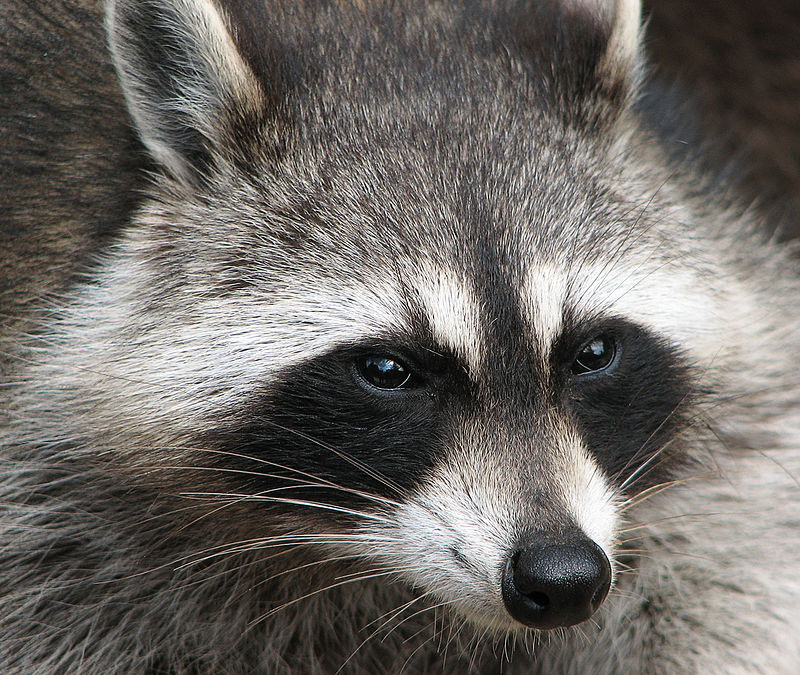Raccoon
Famous for their raffish black “masks” and ringed tails, raccoons are native in most of North America. They have adapted well to suburban environments throughout the US. Unlike the coyotes we spot regularly, their nocturnal habits make raccoons less conspicuous.
Urban raccoons make their homes in abandoned buildings, in your attic, under your house, cavities in trees, in abandoned vehicles, storm drains, under brush cover, in hollow logs, and change dens frequently. Forest creatures, they like the cover provided by the dense vegetation found around Altadena, and need to be near water, which we provide with our pools and ponds.
Raccoons are omnivores feeding mainly on insects, worms, fish, bird eggs, lizards, fruits and nuts — 40% invertebrates. 33% plants. Only rarely do they hunt birds or other mammals, but they do relish our garbage, and they are notorious for going after chickens. These critters find plenty to eat and have few predators. Coyotes probably, and great horned owls can take the little ones, but adult raccoons weigh from 12 to 20 pounds or more. Disease is probably the main check on raccoon population. In Altadena, it is currently on a down cycle down due to distemper which sweeps through every 5 to 7 years.
Raccoons are shy and usually retreat from people, but beware, if provoked they can be vicious. If you surprise one inside your house, ask it to leave, don’t get aggressive or you might find yourself tangling with fangs and claws. Another reason to avoid contact with a raccoon is that they are vectors for some serious diseases and parasites. Feces is the most dangerous; raccoons latrine communally, often high places, frequently on roofs. If you find a latrine on your property, look up precautions to take.
In twilight raccoons see well, but their distance vision is poor. They are almost color blind, but they do see green. Their hearing is acute, they can hear extremely soft noises, like an earthworm moving underground. Their strongest sense is the sense of touch. Their fore paws are extremely sensitive and a great part of their brain is dedicated to processing tactile impulses. Despite lacking opposable thumbs, their little hands are amazingly dexterous. When eating, they perch on their hind legs and maneuver their food with their front paws; when near water they like to “wash” or “douse” their food With short legs, raccoons are poor jumpers and can’t run fast, topping out at 10 to 15 mp with a lumbering, bear-like gait They are adept climbers, however, with the rare ability to climb down a tree headfirst by rotating their hind feet to point backwards.
You may find raccoons cute, but they do not make good pets, they need to stay in the wild. In California it’s a misdemeanor to keep any wild animal as a pet. Although the state rarely prosecutes, penalties can run from $500 to a $10,000 fine plus possible jail time. People do make pets of them however, that’s how they got to Germany and Japan where they have become noxious invasive species.
Sources: California Department of Fish and Wildlife, Wikipedia, Critter Control of Pasadena, Jim Hartman, Los Angeles County Dept. of Weights & Measures, Wildlife Management.

